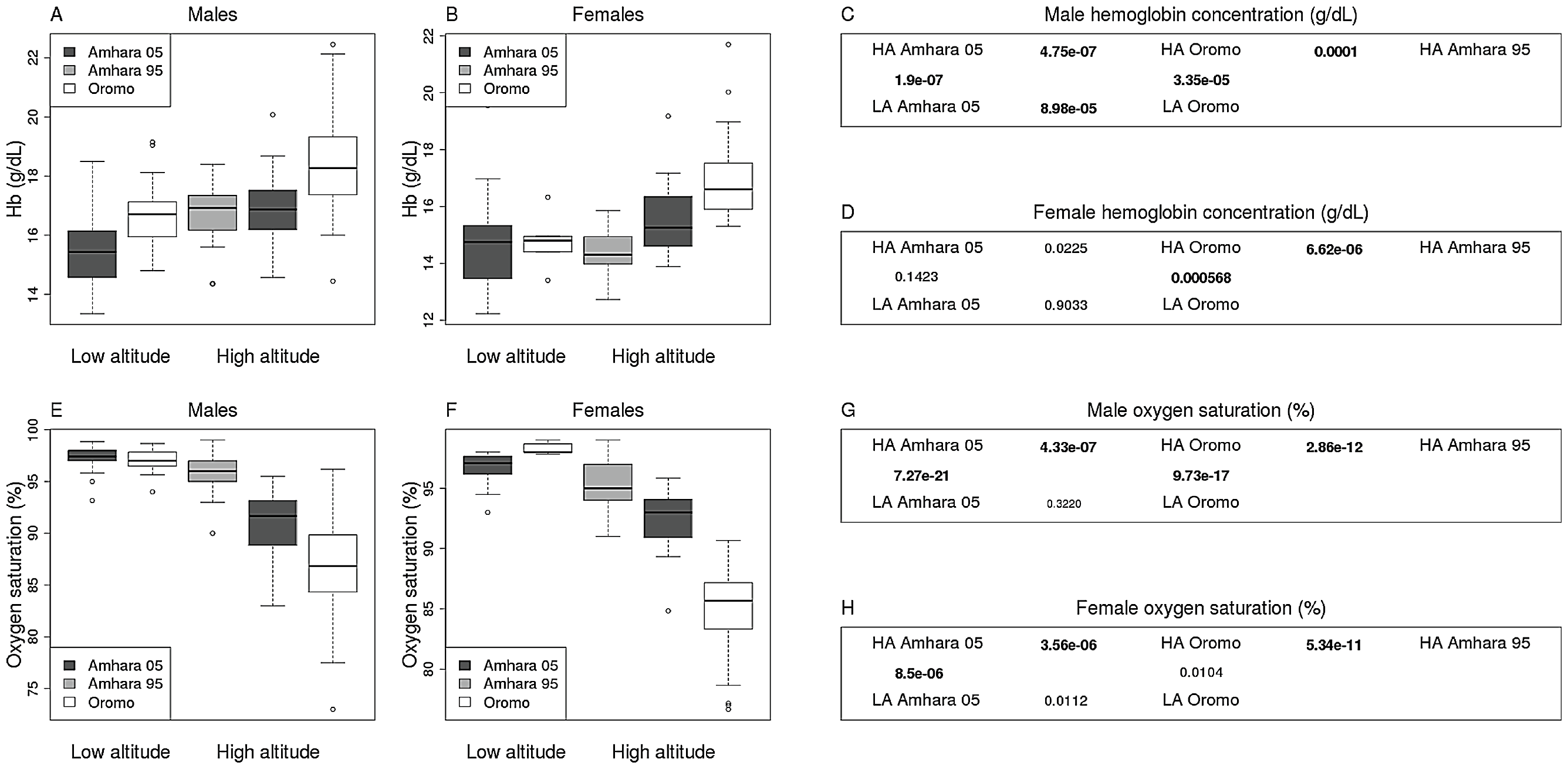Tibetan and Ethiopian highlanders share a biological adaptation that enables them to thrive in the low oxygen levels of high altitudes, but the ability to pass on the trait appears to be linked to different genes in the two groups.
The adaptation is the share is the ability to maintain a low (for high altitudes) level of hemoglobin, the oxygen-carrying protein in red blood cells. Members of populations who historically live at low altitudes respond to the thin air by increasing hemoglobin levels. The response can help draw oxygen into the body to try and avoid hypoxia, but that increases blood viscosity and the risks for thrombosis, stroke and difficulties with pregnancies.
How long do such physiological and genetic changes take? The adaptation is present in an ethnic group that has lived high in mountains of Ethiopia for over 5,000 years but not among a related group that has lived high in the mountains for 500 years.
The researchers found that the genes responsible for hemoglobin levels in Tibetans don't influence an ethnic group called the Amhara. The Amhara have lived more than a mile high in the Semien Mountains of northern Ethiopia for 5,000 to 70,000 years. A different variant on the Amhara genome, far away from the location of the Tibetan variant, is significantly associated with their low hemoglobin levels.
"All indications are we're seeing convergent evolution," said Cynthia Beall, professor of anthropology at Case Western Reserve University.
Convergent evolution is when two separate populations change biologically in a similar way to adapt to a similar environment yet use different mechanisms.
"These were two different evolutionary experiments," Beall said of the mountain dwellers in Tibet and Ethiopia. "On one level—the biological response—they are the same. On another level—the changes in the gene pool—they are different."

CLICK FOR FULL SIZE. Box plots describe variation in the Amhara 05 (dark grey boxes), Amhara 95 (grey boxes) and Oromo (white boxes) for Hb concentration (g/dL) among males (A) and females (B) and for O2 sat also among males (E) and females (F). Box plots show the median (horizontal line), interquartile range (box), and range (whiskers), except the extreme values represented by circles. Statistically significant differences after multiple test correction between groups (unpaired two-sided two-sample t-test) are bolded in C, D, G, and H. Credit: doi:10.1371/journal.pgen.1003110.g001
In addition to studying the Amhara, the researchers looked for changes in physiology and genetics among a related ethnic group, the Oromo, who have lived more than a mile above sea level in the Bale Mountains of southern Ethiopia for 500 years.
They found no long-term adaptation and no genetic changes related to a low-oxygen environment. They found the Omoro had high levels of hemoglobin, as would be expected for a lowland population.
Using the same samples collected from the Amhara and Oromo, the researchers are now studying biological traits among the groups, including ventilation, and the influence of vasoconstrictors and vasodilators on blood flow, and searching for associations with genes.
They also plan to continue research and study blood flow, especially through the heart and lungs of the highlanders, and to test the metabolic rate of mitochondria that use oxygen to create the energy on which our cells and we operate. By revealing how populations can live in severe environments, the research may provide insight for managing high-altitude sickness and for treating low blood-oxygen conditions such as asthma, sleep apnea, and heart problems among all people.
"We also want to find whether people with the variants for low hemoglobin levels have more children and a higher survival rate," Beall said. "That's the evolutionary payoff."
Citation: Alkorta-Aranburu G, Beall CM, Witonsky DB, Gebremedhin A, Pritchard JK, et al. (2012) The Genetic Architecture of Adaptations to High Altitude in Ethiopia. PLoS Genet 8(12): e1003110. doi:10.1371/journal.pgen.1003110






Comments